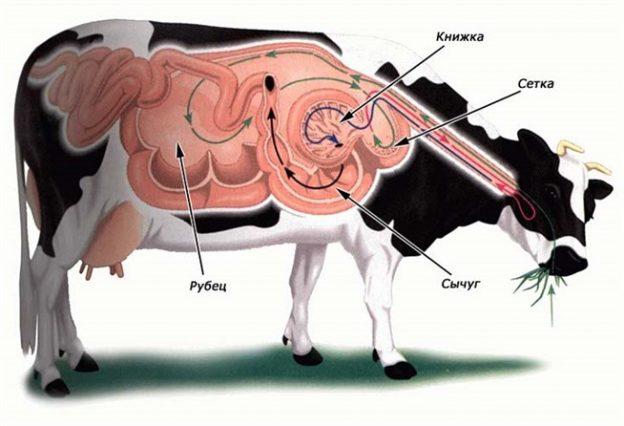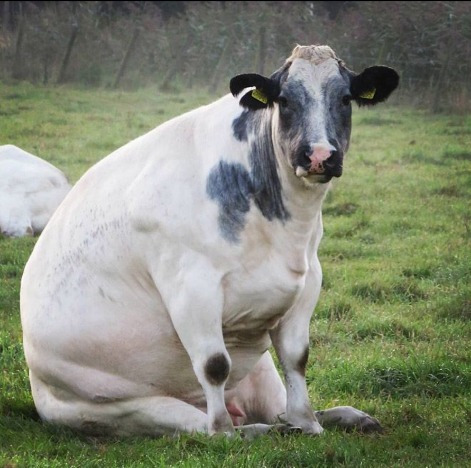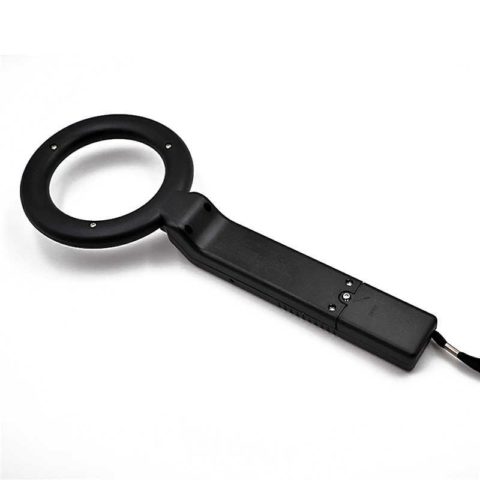Content
Traumatic reticulopericarditis in cattle is not as common as reticulitis, but these diseases are interrelated. At the same time, the second without the first can develop, but on the contrary, never.
What is traumatic reticulopericarditis
Bovine suffers from traumatic reticulitis and reticulopericarditis much more often than choosy small livestock. The explanation for this lies in the lifestyle of the tours - the ancestors of domestic cows.
There is an interesting opinion that a cow can live peacefully even with a coil of wire in its stomach. Can not. But such a belief has a foundation.
The wild ancestors of cattle, like today's cows, did not shine with speed and could not escape from predators. Their protection was the ability to hide in the thickets at the edges of the forest. They could eat only during changes of day and night predators, that is, in the morning and evening twilight. Time is short, you need a lot of grass. The turs have developed the ability to swallow, without chewing, large portions of feed at once, and then, in the bushes, regurgitate it and chew gum thoroughly.
After domestication, this ability played a cruel joke with cows: together with grass and concentrates, they began to swallow human-made objects.
The problem worsened after iron became cheap and people stopped picking up the smallest pieces to be smelted. The cows began to swallow iron objects along with grass, hay and fodder.
The first section of the stomach is called the mesh. All foreign objects settle in it. Metal products with blunt edges do not injure the mesh wall, although they worsen the digestion process. Sharp pieces of iron pierce the mesh. This injury is called traumatic reticulitis.
The mesh is very close to the heart muscle. When the cow moves and contractions of this part of the stomach, sharp objects pass through the wall of the mesh and enter the abdominal cavity, diaphragm, and liver. Most often, the heart muscle is damaged. It is this damage that is called traumatic reticulopericarditis.
Signs of traumatic reticulopericarditis in cows
The disease always begins with traumatic reticulitis. With an attentive attitude to the animal, the problem can be noticed even at the initial stage. In this case, there is still a chance of saving the cow's life.
Signs of acute traumatic reticulitis:
- loss of appetite;
- lack of gum;
- deterioration of the scar;
- general oppression;
- pain when pressing on the withers or the region of the xiphoid process;
- decrease in milk yield;
- arching of the back;
- groans;
- fear of lying down, sometimes cows remain standing for several days, which is very difficult for them physically;
- turning the elbow joints from the chest outward;
- the appearance of muscle tremors.
The most characteristic symptom of acute traumatic reticulitis is persistent digestive disorders, in which constipation is replaced by diarrhea.
In the case of overflow of reticulitis into traumatic reticulopericarditis, the first case does not reach the chronic form. Signs of traumatic reticulopericarditis are added to the initial symptoms:
- the beginning of lifting a lying cow from the front legs, instead of the hind ones;
- unwillingness to go uphill;
- reluctant movement in the herd, the sick cow is constantly lagging behind.
With the development of the process, the work of the heart muscle changes: initially, strong contractions weaken as they accumulate in the exudate. The pulse becomes fast and weak. The jugular veins are full of blood. On palpation in the region of the heart, the cow shows a reaction to pain. Due to poor functioning of the heart, fluid from the body is poorly excreted, and cold edema appears in places characteristic of the disease:
- pharynx;
- dewlap;
- intermaxillary space.
Breathing fast, even at rest. The temperature is often elevated. On average, traumatic reticulopericarditis develops in 2-3 weeks. Sometimes the development of the process occurs very quickly or, conversely, drags on for several months.
It all depends on where the tip entered the heart muscle, and how long this piece of iron was.
Diagnosis of traumatic reticulopericarditis in cattle
Traumatic reticulitis is even now diagnosed by symptoms that are very vague. Modern complexes can be equipped with X-ray machines and metal detectors, with the help of which foreign bodies can be detected. With reticulitis, the prognosis is more favorable than after the development of traumatic reticulopericarditis.
The latter, in the absence of equipment, is diagnosed using special tests:
- Stand to the left of the cow. Bend your right leg (yours) at the knee, rest your elbow (also yours) on the knee. Press with your fist in the area of the xiphoid process. The pressure is increased by lifting the leg to the toes. An alternative to exercise is a stick passed under the cow in the same region of the xiphoid process. The stick is lifted simultaneously from both sides, that is, 2 people are needed.
- The cow is taken by the skin fold at the withers and the skin is pulled upward. The cow's head is held in an extended position.
- They drive the cow down the descent.
- Check the reaction with a hammer in the area of the xiphoid process.
With all these checks, the cow experiences a bout of pain. She lies down abruptly and groans. The disadvantage of samples is that they cannot be used to diagnose a specific pathology. You can only establish soreness in a specific area.
If the samples are positive, the problem can be clarified using magnetic probes that are inserted into the mesh. At the same time, remove those metal objects that are in the grid. But only those foreign bodies that can be captured by the magnet and which have not yet gone beyond the mesh. In the case of traumatic reticulopericarditis, the probe is already useless as a remedy.
Also, a metal detector and X-ray are used to detect foreign metal bodies. The latter also shows non-metallic objects.
Treatment of traumatic reticulopericarditis in cattle
The prognosis for the treatment of reticulopericarditis is poor. Even the treatment of traumatic reticulitis in cattle is possible only if the mesh has not perforated. It is necessary to "catch" traumatic reticulopericarditis even at the stage when "a foreign body has not pierced the mesh."
Metal pieces are also not all you can get. Copper or aluminum does not stick to magnetic traps.
Diagnostics and operations
Before the introduction of the probe, the cow is kept on a starvation diet for 12 hours with free access to water. If the cow does not drink herself, the water is forced to drink. Before diagnostics, be sure to solder 2 liters. A probe is inserted through the nasal passage up to the pharynx. So a magnet is attached to the probe and the entire structure is slowly pushed to the scar.
The landmark from the outside is the 6-7th rib near the shoulder joint. The location of the magnet is determined using a compass.
The probe remains in the mesh for up to 24 hours if traumatic reticulopericarditis is to be diagnosed. For the treatment of traumatic reticulitis, the magnet should be in the grid for 1.5-3 hours. Moreover, at this time, the cow needs to be driven over hilly terrain, so that descents and ascents alternate. With traumatic reticulopericarditis, this can be dangerous.
To remove the probe, several liters of warm water are again poured into the cow and the manipulations are carried out in the opposite direction to those used during the introduction. Remove adhered metal from the probe.
Cattle treatment
After removing the probe, while there is hope that the dangerous foreign body was removed, the cattle is prescribed a diet and rest. The diet includes:
- jelly;
- bran chatter;
- linseed broth;
- good soft hay mixed with green grass.
The heart is supported with cold compresses applied to the area. Laxatives and diuretics are added to the feed to accelerate the absorption of exudate.
To prevent the development of sepsis, cows are prescribed antibiotics and sulfonamides. Caffeine is prescribed subcutaneously to stimulate the respiratory system and heart muscle. The dose for cattle is 2.5 g. Glucose solution 30-40% is administered intravenously. Dose 150-300 ml.
Conservative treatment is possible if the traumatic object has been removed. Cattle are sent for slaughter in 3 cases:
- the foreign body remains inside and continues to injure the pericardium;
- the damage is too great;
- surgery is not economically viable.
The latter is almost always unprofitable, except for cases of disease of especially valuable breeding cattle. But such cattle are unlikely to suffer from perversions of appetite and swallow glands. In all other cases, if, after probing, the cow's condition continues to deteriorate, she is sent to slaughter.
Preventive actions
A private cow owner is unlikely to be able to "pull" the prevention of traumatic reticulopericarditis. He is only able to keep track of the cleanliness of pastures, feeders and stables, removing metal objects from there.
On farms, in addition to cleaning the area with a mine detector, magnetic rings or traps are implanted into the cows' proventricles. Magnets attract iron and protect the abdominal cavity from foreign objects. True, nowhere is it specified how these traps are cleared of debris. At the compound feed production, magnetic equipment must be installed that will clean products from metal objects.
Often, cattle accidentally swallow foreign objects due to a violation of the vitamin and mineral balance. High-yielding dairy cows develop the so-called "licks" with an improperly composed diet. Cattle with vitamin and mineral deficiency begins to suffer from appetite perversion and swallow inedible items.
Prevention of "licks" in cows - a balanced diet. Getting enough micronutrients into dairy cattle prevents appetite perversion. When dealing with symptoms, and not with the source of the problem, farms establish a roughage sensing procedure and pass concentrates through electromagnetic installations.
Conclusion
Traumatic reticulopericarditis in cattle, even in modern conditions, is practically not amenable to treatment. In private households, it makes sense to treat cattle has not yet reached reticulopericaditis. But it is even better to reduce the risk of the cow swallowing foreign objects by not skimping on high-quality feed and vitamin and mineral premixes.












